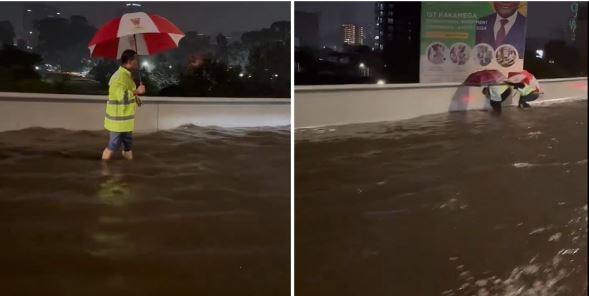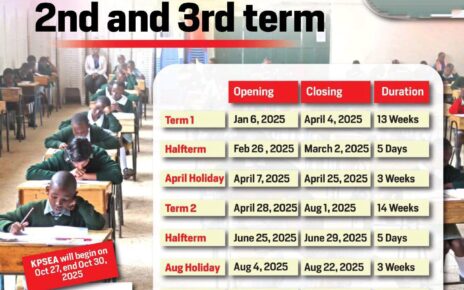For nearly eight consecutive hours, relentless rainfall inundated the streets of Kenya’s capital, Nairobi, starting Sunday night and persisting until Monday morning.
The deluge was widespread, affecting all 17 subcounties of the city. Floods wreaked havoc in various areas, including parts of the Central Business District, Westlands, and Eastleigh, among others.
Images and videos circulated on social media platforms depicted the extent of the flooding, with roads submerged and vehicles, pedestrians, and even motorcycle taxis struggling to traverse the waterlogged streets.
Every thoroughfare, sidewalk, and drainage system became inundated, rendering them impassable for pedestrians and vehicles alike.
Even the recently constructed Expressway, spanning 27 kilometers with sections both at ground level and elevated, was not immune to the flooding. Motorists found themselves stranded on sections of the road as water pooled, causing delays and frustration.
In one video captured by a bystander, a Chinese individual could be seen bravely attempting to direct traffic in less flooded sections of the expressway, wearing a reflective vest and using an umbrella to shield himself from the rain as water surrounded him.
The Expressway, a four-lane dual carriageway designed for speeds of up to 80 kilometers per hour, boasts 11 interchanges strategically located throughout Nairobi. However, the torrential rains highlighted the vulnerabilities in the city’s infrastructure, particularly its drainage systems.
Nairobi’s residents are all too familiar with the consequences of heavy rainfall, as it inevitably leads to traffic congestion and impassable roads. Commuters, whether in public transport or private vehicles, face the daunting task of navigating through flooded streets, turning their daily commute into an arduous endeavor.
The inadequacy of the city’s drainage system becomes glaringly evident during such downpours, as water accumulates due to its limited capacity. Nairobi Governor Johnson Sakaja acknowledged the challenges posed by the city’s drainage infrastructure, citing its fixed capacity as a significant obstacle to effectively managing floods.
Despite efforts by the “Green Army,” a group of youth tasked with maintaining cleanliness and unclogging drainages, the problem persists. Governor Sakaja emphasized the need for substantial investment in expanding the drainage system to mitigate the recurring issue of flooding.
However, he also raised pertinent questions regarding resource allocation, highlighting the competing priorities faced by his administration. Balancing the immediate needs of flood mitigation with other essential projects poses a significant dilemma for policymakers.
Ultimately, while short-term measures such as regular cleaning and unclogging of drainages help alleviate the problem to some extent, a more comprehensive and long-term solution requires significant financial investment and strategic planning to safeguard Nairobi against the impacts of heavy rainfall and flooding.



